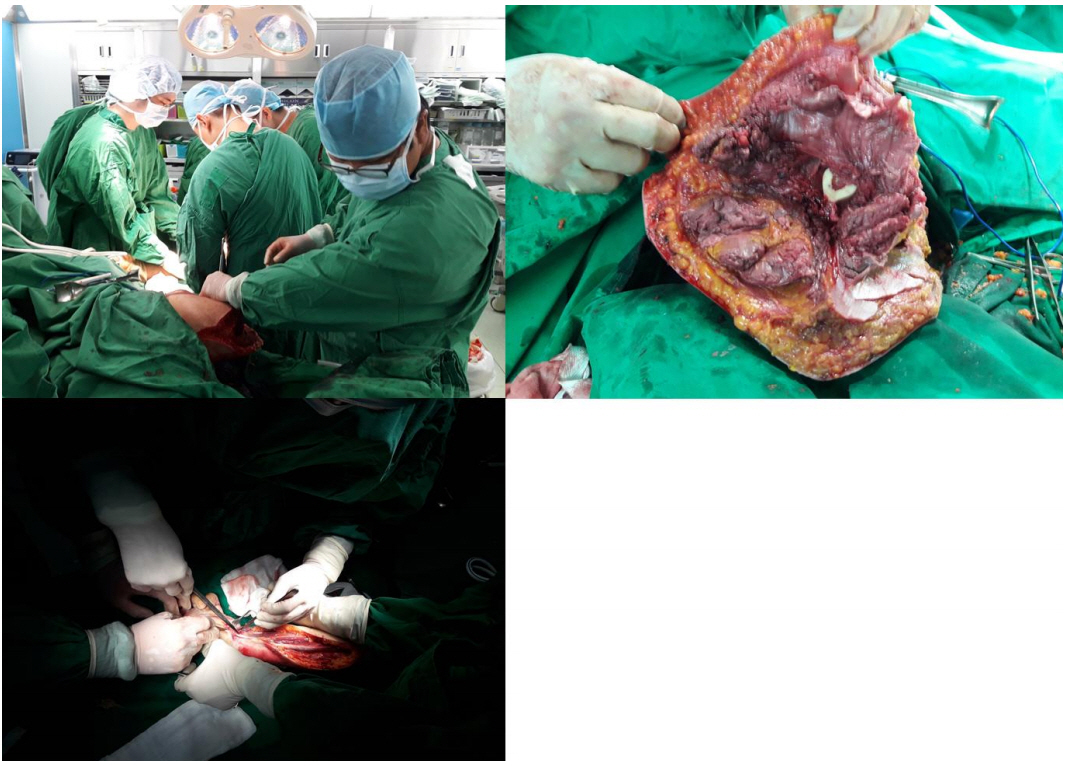The Importance of a Multidisciplinary Approach to High Voltage Electrical Injuries
Article information
Abstract
The high voltage electrical injury is uncommon and is typically only reported in about 5 percent of major burn injuries. However, it is a major cause of amputation of extremities. Electrical burns are arbitrarily divided into high voltage (R1000 V) and low voltage (< 1000 V) injuries. In electrical injuries, decisions must be made about cardiac monitoring, emergent exploration and decompression of the extremity compartments, and the treatment for myoglobinuria. In this regard, we report of the importance of using a multidisciplinary approach to high voltage electrical injury.
CASE
A 36-year-old female participated in paragliding during a visit to Jeju island. Due to a rogue wind gust, her and pilot crashed into a high voltage (22000 V) electrical wire. Her ankle was hung from the electrical wire. The pilot was in cardiac arrest upon arrival of emergency personnel at the scene. Her initial vital signs were 128/81mmHg-121/min-20/min-37.8℃, and her EKG was nonspecific. She complained of severe pain in her left-side extremities. We found a severe burn (grade III-IV) on her left upper and lower extremities (Fig. 1.). We inserted a right subclavian central catheter and an additional internal jugular hemo-catheter for vigorous hydration and preparation of hemodialysis. Traumatologists performed an escharotomy on her upper and lower extremities and called for an orthopedic surgeon. The traumatologist and orthopedic doctor elected to perform an emergency operation (fasciotomy of the left upper limb and above-knee amputation of the left lower limb). Her initial urine myoglobulin level was 1923 mcg/L.
After resuscitation, she was sent to the operation room. One orthopedic doctor and two traumatologists performed an above-knee amputation and fasciotomy, simultaneously (Fig. 2.).
For pain control and facilitation of further operational procedures, we kept the patient ventilated and under continuous infusion of sedatives and analgesics. After the first operation, we consulted a nephrologist and applied renal replacement therapy to her. We debrided and irrigated the necrotic tissue. Finally, she was transferred to the burn center for advanced burn management.
DISCUSSION
In a high voltage electrical injury, after an initial resuscitation, decisions must be made regarding cardiac monitoring, emergent exploration and decompression of the extremity compartments, and treatment of myoglobinuria [1]. It is important to cooperate with a multidisciplinary team to improve the patient’s prognosis.
Notes
Conflict of Interest Statement
No potential conflict of interest relevant to this article was reported.

